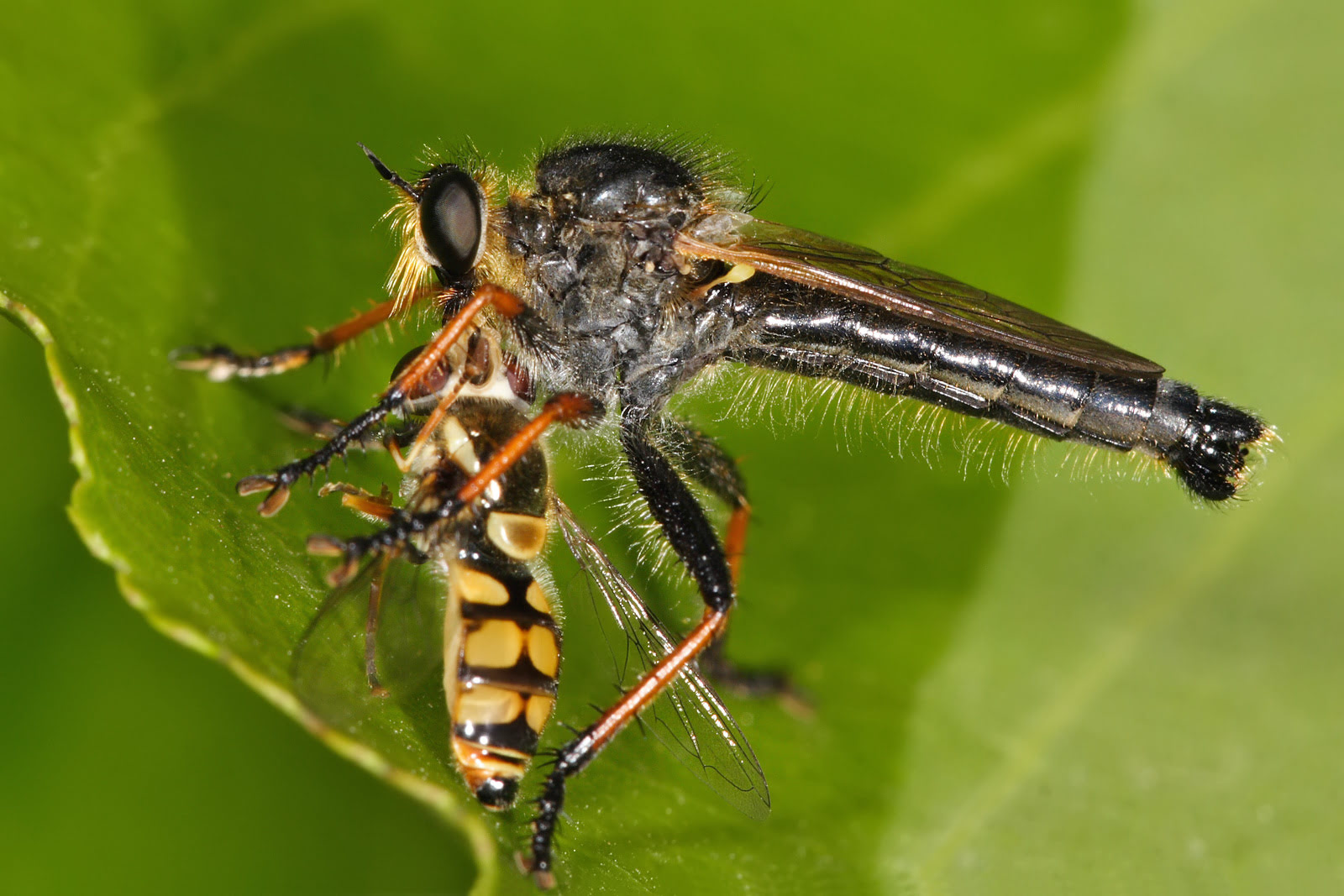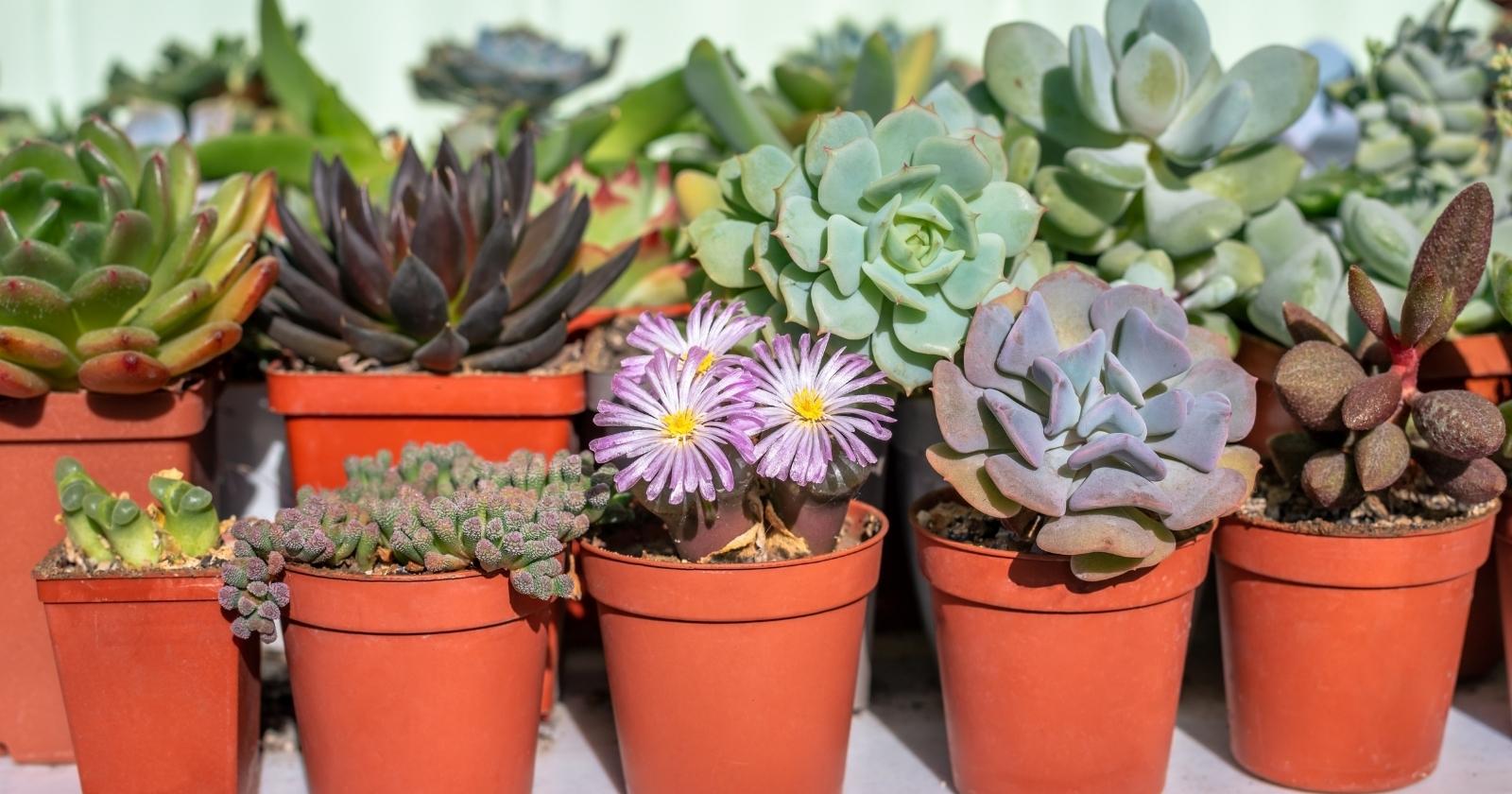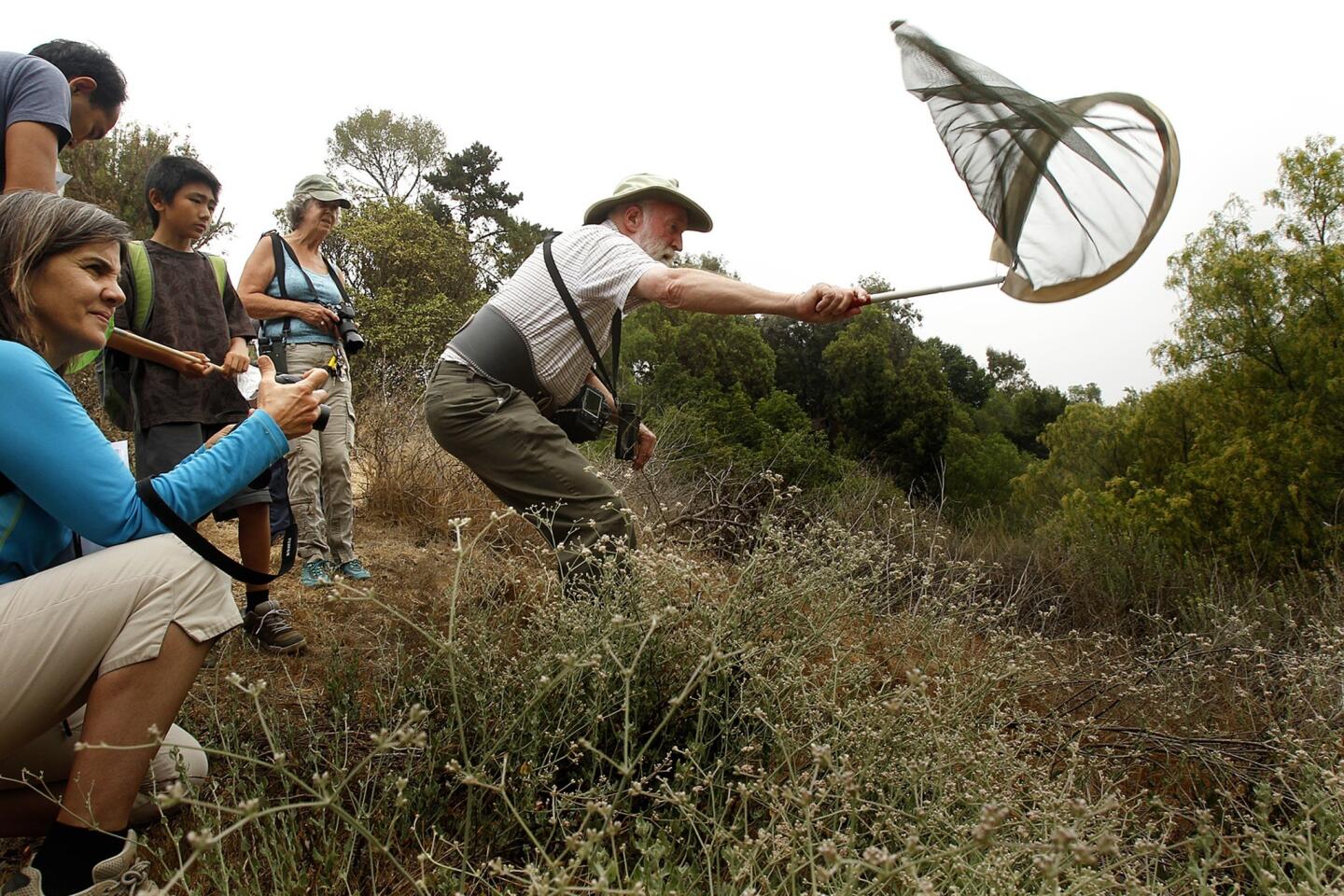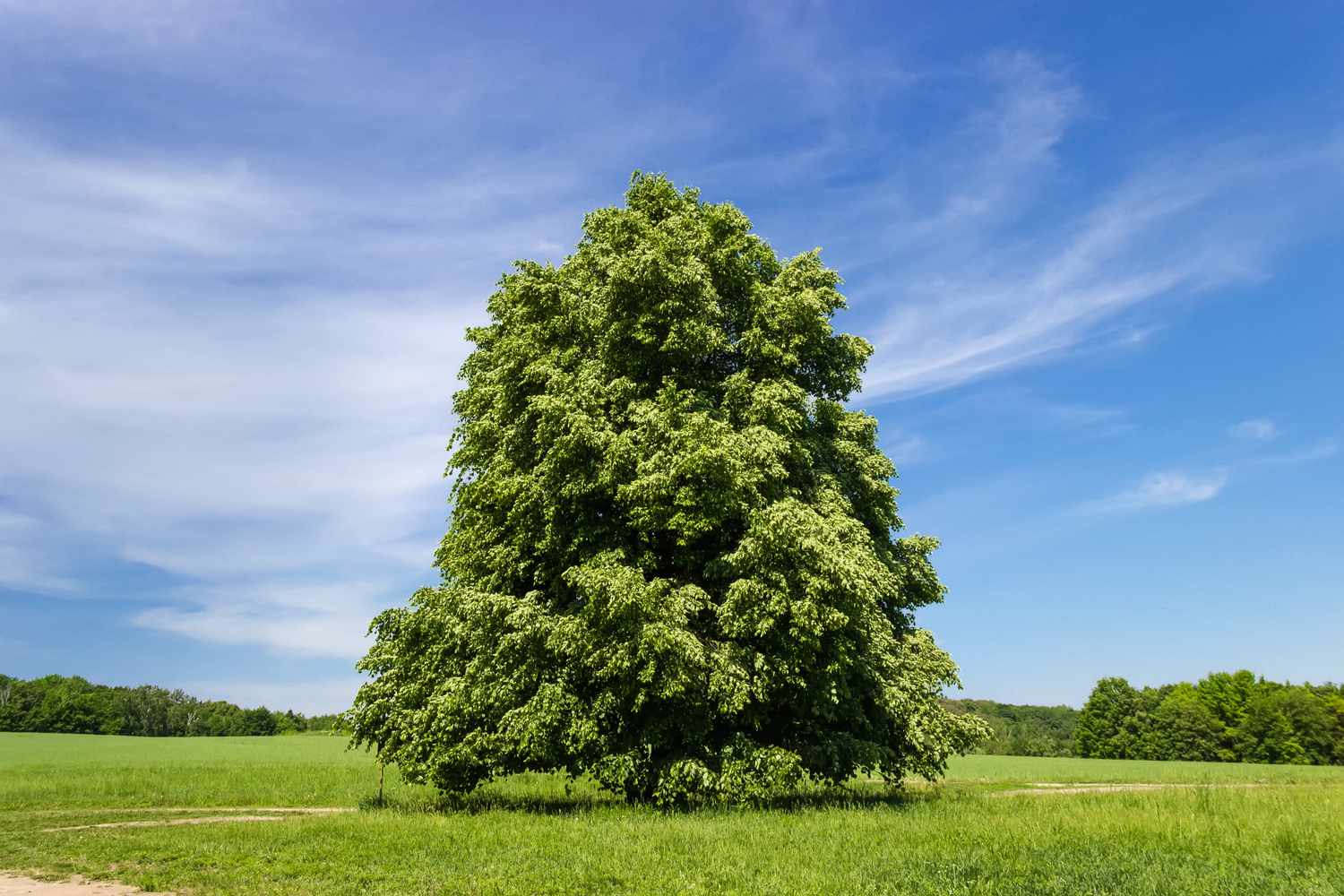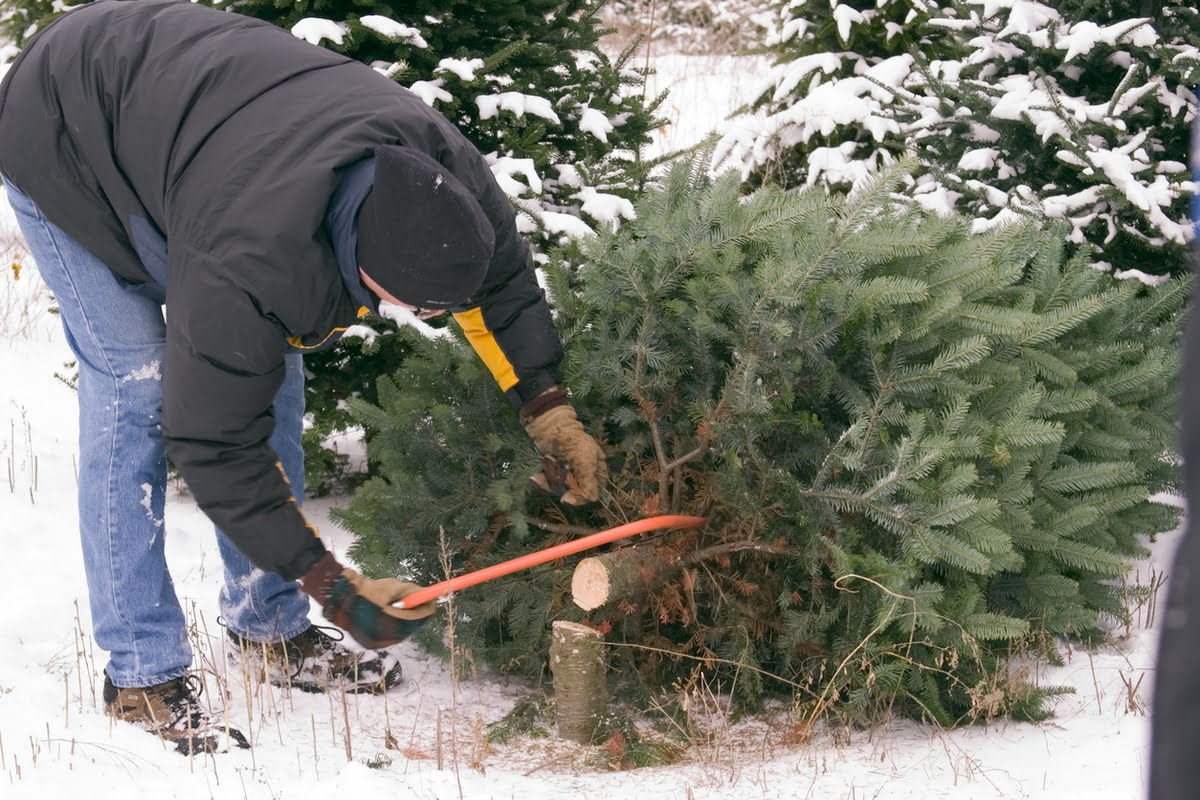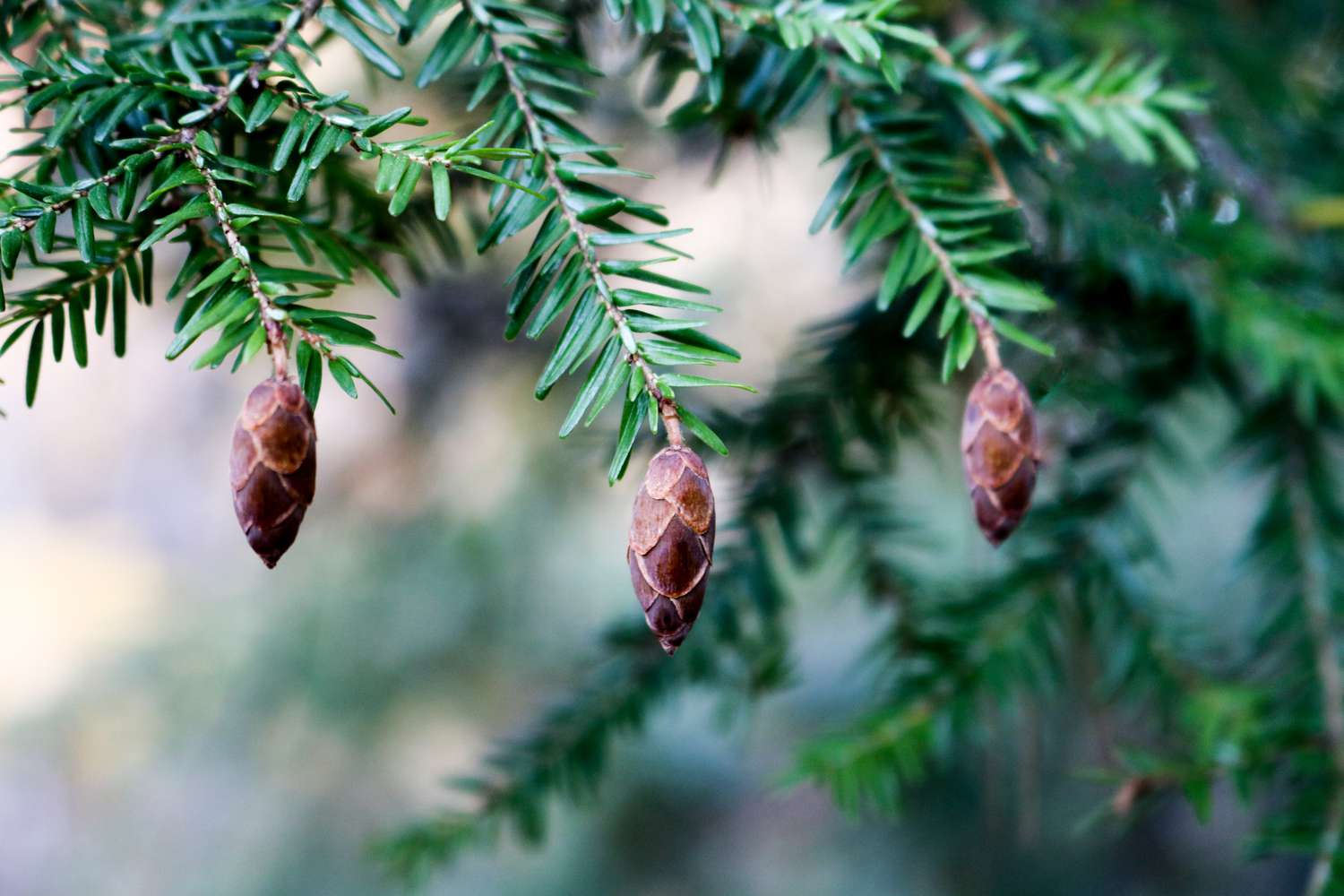Home>Gardening News and Trends>Latest News>What Are The Trees In The Lorax Called


Latest News
What Are The Trees In The Lorax Called
Modified: February 8, 2024
Discover the latest news about the trees in The Lorax and their fascinating names. Stay updated with the intriguing details and insights revealed in our comprehensive article.
(Many of the links in this article redirect to a specific reviewed product. Your purchase of these products through affiliate links helps to generate commission for Chicagolandgardening.com, at no extra cost. Learn more)
Table of Contents
- Introduction
- The Lorax and its Environmental Message
- The Importance of Trees in The Lorax
- Understanding the Trees in The Lorax
- The Truffula Trees: The Iconic Trees of The Lorax
- The Onceler’s Deforestation and its Impact on Truffula Trees
- The Bar-ba-loots: Creatures Dependent on Truffula Trees
- The Swomee-Swans: Birds Affected by the Deforestation
- The Humming-Fish: Aquatic Life Supported by Truffula Trees
- The Once-ler’s Change of Heart and the Restoration of Trees
- Conclusion
Introduction
The Lorax, written by Dr. Seuss, is a beloved children’s book that has captivated readers with its powerful environmental message. The story revolves around the Once-ler, a character who discovers a vibrant and enchanting landscape inhabited by unique creatures.
Throughout the story, the Once-ler’s relentless pursuit of profit leads to the rapid deforestation of the area, resulting in the destruction of the ecosystem and the extinction of species. The Lorax, a small, mustached creature who speaks for the trees, serves as a moral compass, advocating for the preservation of nature and the conservation of resources.
The book emphasizes the importance of trees and the vital role they play in maintaining a healthy planet. The Lorax serves as a poignant reminder of the consequences of human activities on the environment and the urgent need to make sustainable choices.
In this article, we will delve into the significance of trees in The Lorax, focusing on the iconic Truffula trees and the various creatures that depend on them. We will explore how the deforestation caused by the Once-ler affects the ecosystem and discuss the redemption and restoration of the trees.
Join us on this journey to discover the names and roles of the trees in The Lorax and gain a deeper understanding of the environmental lessons conveyed within the pages of this timeless tale.
The Lorax and its Environmental Message
At its core, The Lorax is a compelling cautionary tale that sheds light on the devastating consequences of human actions on the environment. Written by Dr. Seuss, the book delivers a powerful message about the importance of environmental stewardship, conservation, and the repercussions of greed and overconsumption.
The Lorax serves as a poignant metaphor for nature and its voiceless plea for preservation. The character of the Once-ler represents corporate greed and shortsightedness, while the Lorax himself symbolizes the voice of reason and environmental consciousness.
The book highlights the detrimental impacts of deforestation, pollution, and the depletion of natural resources. Through vivid illustrations and lyrical prose, Dr. Seuss vividly portrays the transformation of a once thriving ecosystem into a desolate wasteland, devoid of life and hope.
By personifying the trees and the creatures that depend on them, the Lorax effectively captures the interconnectedness of all living beings and the fragility of ecosystems. It reminds readers that every action we take has an impact and that individual accountability is crucial in preserving our planet for future generations.
The Lorax’s environmental message is all the more relevant today, as the world grapples with the escalating effects of climate change and widespread environmental degradation. It serves as a call to action, urging us to reevaluate our consumption patterns, adopt sustainable practices, and advocate for policies that prioritize the protection of nature.
The book encourages readers, young and old, to become environmental stewards, to nurture and protect the trees that provide us with clean air, habitats for wildlife, and countless other vital resources.
Ultimately, The Lorax implores us to consider the long-term consequences of our actions and to remember that we hold the power to make a difference. It inspires us to be mindful of our choices, to take a stand against destruction, and to cherish and protect the natural world we call home.
The Importance of Trees in The Lorax
Trees play a vital role in The Lorax, serving as the foundation of the book’s ecosystem and carrying a profound message about their significance in our lives. They are not just mere plants but living organisms that provide numerous benefits to the environment and all living beings.
In the story, the Truffula trees, with their vibrant tufted tops, represent the embodiment of nature’s beauty and abundance. They serve as a source of shelter, food, and resources for various creatures, creating a harmonious and balanced ecosystem.
One important role that trees play is their ability to produce oxygen through photosynthesis. They act as the Earth’s lungs, absorbing carbon dioxide and releasing oxygen, which is vital for sustaining life. Without trees, the balance of atmospheric gases would be disrupted, leading to potentially catastrophic consequences.
Furthermore, trees are vital in mitigating the impacts of climate change. They act as carbon sinks, absorbing and storing carbon dioxide, a greenhouse gas that contributes to global warming. By reducing the concentration of greenhouse gases in the atmosphere, trees help to regulate the Earth’s temperature and slow down the pace of climate change.
Trees also play a critical role in preserving biodiversity. They provide habitats and food sources for countless animal species, including birds, mammals, and insects. In The Lorax, the Truffula trees support a range of creatures, such as the Bar-ba-loots, the Swomee-Swans, and the Humming-Fish, all of which rely on the trees for their survival.
Moreover, trees help to prevent soil erosion by stabilizing the ground with their extensive root systems. They also have the ability to absorb excessive rainwater, reducing the risk of flooding and maintaining the water cycle. In areas prone to drought, trees can contribute to conserving water by reducing evaporation rates and providing shade that lowers ambient temperatures.
Finally, the aesthetic and psychological benefits of trees should not be overlooked. Trees beautify our surroundings, providing a sense of tranquility and serenity. They offer shade on hot summer days, creating comfortable outdoor spaces for people to gather and enjoy nature.
From their role in combating climate change and preserving biodiversity to their contribution to air and water quality, the importance of trees cannot be overstated. The Lorax reminds us of the profound impact trees have on our environment and the urgent need to protect and preserve them for the sake of our planet’s health and well-being.
Understanding the Trees in The Lorax
In The Lorax, the central focus is on the Truffula trees, which are intrinsic to the story’s narrative and serve as a symbol of nature’s beauty and resilience. Understanding the characteristics and significance of these trees deepens our appreciation for their role in the book’s ecosystem.
The Truffula trees are distinguishable by their colorful and fluffy tufts, which gently sway in the breeze. Their vibrant appearance represents the allure and enchantment of nature, and their presence brings life and vitality to the landscape.
These trees are not just ordinary trees; they possess exceptional qualities that make them essential to the well-being of the ecosystem. The Truffula trees provide shelter and homes for various creatures, serving as habitats for the Bar-ba-loots, the Swomee-Swans, and the Humming-Fish.
Additionally, the Truffula trees are a source of sustenance for the Bar-ba-loots, who feed on the Truffula fruits. This interdependence highlights the delicate balance between species and the intricate web of life.
On a larger scale, the Truffula trees play a significant role in maintaining the health of the environment. Through photosynthesis, these trees absorb carbon dioxide from the atmosphere and release oxygen, helping to mitigate the adverse effects of climate change. Their role as carbon sinks is crucial in reducing greenhouse gas emissions and preserving a stable climate.
Moreover, the Truffula trees contribute to the conservation of water resources. Their root systems help retain moisture in the soil, preventing excessive evaporation and maintaining the water balance. This is especially valuable in areas prone to drought, where water conservation is of utmost importance.
It is important to note that the Truffula trees are not just objects of exploitation in the story but representations of nature’s resilience and the consequences of human actions. The Once-ler’s relentless desire for profit leads to the systematic destruction of these magnificent trees, resulting in the degradation and deterioration of the ecosystem.
Understanding the symbolism and significance of the Truffula trees in The Lorax reinforces the message of environmental stewardship and the consequences of unchecked exploitation. They remind us of the fragility of nature and the responsibility we hold to protect and preserve it for future generations.
The Truffula Trees: The Iconic Trees of The Lorax
One of the most iconic elements of The Lorax is the presence of the Truffula trees, which serve as powerful symbols throughout the story. These unique and visually captivating trees play a central role in conveying the book’s environmental message and capturing the imagination of readers.
The Truffula trees are renowned for their distinctive appearance, characterized by their towering height and colorful, swirling tufts. Their vibrant and whimsical design instantly captures the attention and curiosity of readers, inviting them into a fantastical world.
Beyond their enchanting aesthetics, the Truffula trees represent the epitome of nature’s beauty and abundance. They embody the lushness and vitality of a thriving ecosystem, creating a sense of wonder and appreciation for the wonders of the natural world.
In addition to their visual appeal, the Truffula trees play a crucial ecological role within The Lorax’s narrative. They provide habitats for a variety of creatures, including the playful Bar-ba-loots, who live among the Truffula trees and depend on them for sustenance.
The Truffula trees are not just providers of shelter and food, but they are also essential contributors to the health of the environment. Through photosynthesis, they convert sunlight into energy and absorb carbon dioxide, releasing oxygen as a byproduct. This process helps to purify the air and combat the negative effects of greenhouse gases.
Furthermore, the Truffula trees exemplify the interconnectedness of all living beings. They support various forms of life, from the Bar-ba-loots to the Swomee-Swans and the Humming-Fish, highlighting the intricate web of relationships within an ecosystem.
However, the Truffula trees also represent the tragic consequences of human greed and the destruction of nature. In the story, the Once-ler’s uncontrolled harvesting of the Truffula trees ultimately leads to their near-extinction and the devastation of the surrounding environment.
The symbolism of the Truffula trees serves as a powerful reminder of the irreplaceable value of nature’s resources and the urgent need to protect and preserve them. Their presence in The Lorax encapsulates the profound impact of human actions on the environment and the responsibility we bear in making sustainable choices.
Overall, the Truffula trees are not merely fictional elements in The Lorax; they represent the fragility and resilience of nature, the consequences of our actions, and the potential for redemption and restoration. They inspire us to appreciate and safeguard the trees that grace our own world, reminding us of our role as stewards of this precious planet.
The Onceler’s Deforestation and its Impact on Truffula Trees
In The Lorax, the Once-ler’s relentless pursuit of profit leads to the rapid deforestation of the Truffula trees, resulting in severe consequences for the ecosystem and the survival of these iconic trees. The Once-ler’s actions serve as a cautionary tale about the detrimental effects of unchecked exploitation and the urgent need for sustainable practices.
At first, the Once-ler is drawn to the abundance and beauty of the Truffula trees, with their vibrant tufts and valuable tufts. However, driven by his desire for personal gain, he begins harvesting the trees at an alarming rate, ignoring the Lorax’s warnings about the consequences of his actions.
As the Once-ler continues his deforestation activities, the landscape undergoes a rapid transformation. The once-thriving ecosystem turns into a bleak wasteland, devoid of the lush Truffula trees and the life they sustained.
The deforestation caused by the Once-ler has a profound impact on the Truffula trees themselves. With their numbers rapidly dwindling, the Truffula trees edge dangerously close to extinction, symbolizing the devastating consequences of overexploitation.
Additionally, the destruction of the Truffula trees has far-reaching effects on the surrounding environment and the creatures that depend on them. The habitat of the Bar-ba-loots, the playful creatures who rely on the Truffula fruits for food, is devastated, leaving them without a source of sustenance.
The absence of Truffula trees also affects the Swomee-Swans, birds known for their melodious voices. With the trees gone, their nesting sites and food supply disappear, resulting in their migration to quieter and less polluted lands.
Furthermore, the Humming-Fish, aquatic creatures that rely on the Truffula trees for clean water, suffer from pollution and habitat destruction. As the Truffula trees vanish, so do the conditions necessary for the Humming-Fish to thrive, further disrupting the delicate balance of the ecosystem.
The Once-ler’s deforestation activities demonstrate the devastating consequences of prioritizing short-term profit over the long-term health of the environment. The impact on the Truffula trees and the creatures that rely on them highlights the interconnectedness of all living beings and the need for responsible resource management.
Ultimately, the deforestation caused by the Once-ler serves as a stark warning, reminding us of the irreversible damage that can occur when we neglect our role as caretakers of the environment. It underscores the importance of sustainable practices, conservation, and the preservation of our natural resources for future generations.
The Bar-ba-loots: Creatures Dependent on Truffula Trees
Among the unique creatures inhabiting the world of The Lorax, the Bar-ba-loots stand out as lovable and playful creatures that are heavily reliant on the Truffula trees for their survival. Their presence emphasizes the essential role these trees play in providing food and shelter for various species within the ecosystem.
The Bar-ba-loots are small, bear-like animals that happily make their homes in the Truffula forest. With their friendly demeanor and insatiable appetite for Truffula fruits, these creatures symbolize the harmony and abundance that existed when the trees were plentiful.
The Truffula trees and the Bar-ba-loots have a symbiotic relationship. As the trees bear fruit, the Bar-ba-loots enjoy a bountiful food source. The nutritious Truffula fruits serve as their primary sustenance, and the availability of this food supply directly impacts their population and well-being.
However, with the Once-ler’s deforestation efforts, the Truffula trees start to disappear, posing a severe threat to the Bar-ba-loots. As the Once-ler’s actions continue, the Bar-ba-loots face a diminishing food supply, forcing them to seek nourishment elsewhere or face starvation.
The decline of the Truffula trees and the subsequent scarcity of Truffula fruits create a ripple effect throughout the ecosystem. With their primary food source disappearing, the Bar-ba-loots are not the only ones affected—other creatures that rely on the Truffula fruits, such as the Swomee-Swans and the Humming-Fish, also experience the consequences of the dwindling tree population.
The plight of the Bar-ba-loots reflects the devastating impact of habitat destruction and the disruption of natural food chains caused by human activities. Their struggle serves as a poignant reminder of the interconnectedness of species within an ecosystem and the far-reaching consequences when a critical resource is compromised.
The Bar-ba-loots, through their adorable and endearing presence, evoke a sense of empathy and concern for the delicate balance of nature. Their dependence on the Truffula trees serves as a vital reminder of the vital role that trees play in supporting diverse wildlife populations and the need for responsible stewardship of our environment.
Their story in The Lorax encourages readers to reflect on the interconnectedness of all living beings and to consider the impact of our actions on the habitats and species that depend on natural resources. It underscores the importance of preserving and protecting the ecosystems that support the delicate web of life to ensure the continued existence and well-being of species like the Bar-ba-loots.
The Swomee-Swans: Birds Affected by the Deforestation
In the enchanting world of The Lorax, the Swomee-Swans add their melodious voices and graceful presence to the ecosystem. These unique birds play a vital role in the story, symbolizing the interconnectedness of species and the impact of deforestation on their well-being.
The Swomee-Swans are known for their beautiful songs that resonate through the Truffula forest. Their ability to create harmonious melodies adds an element of enchantment and beauty to the ecosystem, reflecting the tranquility and vitality of their habitat.
However, as the Once-ler continues his relentless deforestation, the Swomee-Swans face a significant threat to their habitat and overall well-being. The destruction of the Truffula trees, which serve as nesting sites and sources of food for the birds, disrupts their way of life and silences their melodic songs.
The absence of the Truffula trees leads to the displacement of the Swomee-Swans, as their nesting sites are destroyed, leaving them without a safe place to raise their young. Moreover, the lack of Truffula fruits, which the birds depend on for sustenance, poses a challenge to their survival, as their food source becomes scarce.
Additionally, the deforestation caused by the Once-ler results in habitat fragmentation, restricting the Swomee-Swans’ ability to find suitable nesting and foraging grounds. This limitation in available habitat forces the birds to migrate to alternative areas, possibly disrupting their breeding patterns and reducing their chances of successfully raising their offspring.
The absence of the Truffula trees and the decline in the Swomee-Swans’ population reflect the destructive consequences of human activities on wildlife and the delicate balance of ecosystems. The impact on these birds serves as a warning of the far-reaching effects of habitat destruction and the disruption of natural habitats.
The Swomee-Swans, with their silenced songs and altered migratory patterns, represent the loss and upheaval experienced by countless species due to deforestation. Their story prompts readers to reflect on the interconnectedness of all living beings and the importance of preserving intact ecosystems for the continued existence of diverse wildlife populations.
The fate of the Swomee-Swans serves as a call to action, urging us to recognize the value of preserving natural habitats and protecting the intricate web of life. Their silencing in The Lorax stands as a reminder of our responsibility to take concrete steps towards conservation and safeguarding the biodiversity that enriches our world.
The Humming-Fish: Aquatic Life Supported by Truffula Trees
In the vibrant ecosystem of The Lorax, the Humming-Fish add a touch of whimsy and grace as aquatic creatures that depend on the Truffula trees for their survival. These enchanting beings highlight the vital role that trees play in supporting not only terrestrial species but also those in aquatic environments.
The Humming-Fish are unique, colorful creatures that reside in the waters surrounding the Truffula forest. They are known for their ability to hum melodious tunes, creating a harmony that complements the songs of the Swomee-Swans and the sounds of the forest.
These aquatic creatures have a close connection with the Truffula trees, as their very existence and well-being are intertwined with the health of the trees and the surrounding environment. The Truffula trees provide essential components, such as clean water and oxygen, that sustain the Humming-Fish and allow them to thrive.
The roots of the Truffula trees play a significant role in maintaining water quality. They act as natural filters, preventing pollutants from entering the water and ensuring a suitable habitat for the Humming-Fish. Additionally, the Truffula trees help regulate water flow and maintain stable water levels, which are crucial for the survival of these aquatic creatures.
Furthermore, the Truffula trees provide the Humming-Fish with much-needed oxygen. Through photosynthesis, the trees release oxygen into the surrounding environment, contributing to the oxygenation of the water. The availability of oxygen-rich water is vital for the survival of aquatic organisms, including the Humming-Fish.
However, the deforestation caused by the Once-ler’s actions disrupts the delicate balance of the ecosystem, with dire consequences for the Humming-Fish. As the Truffula trees are mercilessly cut down, water quality deteriorates, and oxygen levels decline. The once-clear and vibrant waters that sustained the Humming-Fish become polluted and insufficient to support their survival.
The impact of deforestation on the Humming-Fish emphasizes the interconnectedness of all living beings within an ecosystem. Their decline reflects the destructive consequences of habitat destruction and the far-reaching effects on species that depend on specific environmental conditions for their livelihood.
The Humming-Fish’s story serves as a poignant reminder of the importance of preserving the integrity of aquatic habitats and the responsibility we bear in protecting the interconnected web of life. It prompts us to recognize the significance of trees not only on land but also in sustaining the health and well-being of aquatic ecosystems.
The Lorax’s portrayal of the Humming-Fish and their reliance on the Truffula trees serves as a call to action, urging us to take concrete steps in protecting and restoring our waterways and ensuring the continued survival of diverse aquatic species. By valuing and safeguarding these delicate ecosystems, we can promote the health and resilience of the Humming-Fish and countless other aquatic creatures.
The Once-ler’s Change of Heart and the Restoration of Trees
In The Lorax, the Once-ler’s story is one of redemption and a powerful reminder of the capacity for change and the importance of taking responsibility for one’s actions. As the Once-ler reflects on the devastation caused by his greed and the destruction of the Truffula trees, he undergoes a transformation that leads to the restoration of the ecosystem.
Initially, the Once-ler is driven solely by profit and disregards the Lorax’s warnings about the consequences of his actions. However, as he witnesses the devastating impacts of his deforestation, he begins to realize the profound and irreversible damage he has caused to the environment.
This realization leads to a pivotal moment in the story—the Once-ler resolves to change his ways and take responsibility for his past actions. He embarks on a mission to undo the harm he has inflicted by planting the last remaining Truffula seed, determined to bring back the thriving forest and revive the ecosystem.
The Once-ler’s change of heart symbolizes the capacity for individuals to learn from their mistakes and make positive contributions to the world. It highlights the importance of personal accountability and the power of individual actions in bringing about positive change.
As the Once-ler diligently nurtures the Truffula seed, a ray of hope emerges. The seed eventually sprouts, becoming the first of many Truffula trees that will restore the landscape. This restoration signifies nature’s resilience and the possibility of regrowth and renewal when given the chance.
The rebirth of the Truffula forest sparks a transformation in the ecosystem. The return of the trees enables the Bar-ba-loots, the Swomee-Swans, and the Humming-Fish to reclaim their habitats and resume their natural behaviors. With the restoration of the trees, balance and harmony return to the Once-ler’s world.
The Once-ler’s change of heart serves as a powerful life lesson, inspiring readers to reflect on their own actions and the impact they have on the environment. It reminds us that it is never too late to make a positive difference and emphasizes the potential for positive change, no matter how dire the circumstances may seem.
The Once-ler’s journey in The Lorax teaches us the importance of valuing and protecting the natural world, illustrating the powerful impact that individual actions can have on restoring and revitalizing ecosystems. It calls us to be mindful of our choices, to learn from our mistakes, and to work towards building a more sustainable future.
Conclusion
The Lorax by Dr. Seuss is a timeless and impactful story that delivers a profound environmental message. Through the iconic Truffula trees and the creatures dependent on them, the book serves as a powerful reminder of the importance of trees and the consequences of unchecked exploitation and deforestation.
From the Once-ler’s relentless pursuit of profit to the devastating impact on the Truffula trees, Bar-ba-loots, Swomee-Swans, and Humming-Fish, The Lorax highlights the interconnectedness of all living beings within an ecosystem. It underscores the significance of trees in providing essential resources and maintaining the health of the environment.
The Lorax serves as a call to action, urging us to be mindful of our choices and work towards a sustainable future. It emphasizes the importance of responsible stewardship, conservation, and the preservation of natural resources for the well-being of current and future generations.
Furthermore, The Lorax inspires hope and redemption through the Once-ler’s transformation and the restoration of the Truffula forest. It reminds us that positive change is possible, no matter how dire the circumstances may seem.
The lessons from The Lorax extend beyond the pages of the book. They encourage us to be conscientious consumers, to support sustainable practices, and to advocate for policies that protect our environment. By valuing and protecting trees and the ecosystems they support, we can make a meaningful impact on the health of our planet.
The Lorax continues to resonate with readers of all ages, serving as a timeless reminder of our responsibility to protect and preserve the natural world. It serves as a rallying cry to embrace our roles as environmental stewards and to work together in creating a sustainable and thriving future for our planet.

